June 7 - 13, 2020: Issue 453
Dr. Isobel Ida Bennett AO
Isobel Ida Bennett AO
9 July 1909 – 12 January 2008
Endless curiosity marks the life of researcher, educator, marine biologist and conservationist Isobel Bennett.
Isobel Bennett is a heroine to many who aspire to a career in marine associated learnings and works - for pursuing excellence, making records of our aquatic creatures that did not exist before she did, and being an inspiration in not letting gender get in the way of anything by winning a place among the foremost of scholars through sheer persistence and determination.
Isobel Ida Bennett was born in Brisbane in 1909, the eldest child of Islay Percy Colquhoun Bennett and Edith Ferguson Bennett (nee Moody) who were married in Brisbane on October 7th, 1908. Her sister Jean Winifred followed in April 1912 and twins Phyllis Ferguson and Ian Wilfred in November 1915. Edith passed away in 1918 leaving her husband with four children 10 years old and younger.
Their father remarried on May 5th 1922, to Ethel Blanche Lidgard. The family were living in a suburb called Corinda
Having won a scholarship at the state school she attended Isobel was enrolled and educated at Somerville House, a boarding and day school for girls named after Mary Somerville (1780–1872), a famous Scottish scientist and mathematician of the 19th century. During an interview Isobel stated she was always looking at the students studying biology and 'fascinated by the look of the lab.'
Isobel had to leave school at the age of 16 and undertook a secretarial course, and as she later recalled, “In the 1920s it was the only thing a woman could do. That or nursing”.
She worked in a patent Attorneys office until 1928, when her family moved to Sydney. Here she gained employment for four years at the Associated Board of the Royal Schools of Music in Sydney. Late in 1932, after losing her position due to Depression cutbacks, Isobel and her sister decided to take a 6 day P&O Christmas cruise on the brand new Straithaird ship to Norfolk Island.
The Second White Ship
P. & O. STRATHAIRD AFLOAT.
Cable advices state that the Straithaird, the second of the "Great White Ships" of the P. & O. Company's Royal Mail fleet, was launched on July 18 at Barrow-in-Furness, England, and will leave on her maiden voyage to Australia on February 19, 1932. This 22,000 ton all-electric passenger vessel is a sister ship to the Strathnaver, which will leave London on October 2. These ships are the most powerful vessels of their class in the world, have a speed of 22 knots, and carry 1166 passengers—498 in the first class and 668 in the tourist class. They are oil-burning and spotlessly clean. It is estimated that the internal temperature has been reduced by four degrees as a result of the new all white colour scheme for holds and upper works. The Strath liners will offer even possible comfort to all travellers, including "talkies" for both first and tourist passengers, hot and cold air streams—blended at will—for public rooms and cabins, permanent swimming baths for both classes, luminous silent cabin bells, gymnasiums, shops, barbers and hairdressers, etc. Including the Mooltan and Maloja, each 21,000 tons, the P. & O. Company will possess the four largest passenger vessels entering' Australian ports. The Second White Ship (1931, August 6).Advocate (Melbourne, Vic. : 1868 - 1954), p. 26. Retrieved from http://nla.gov.au/nla.news-article171681376
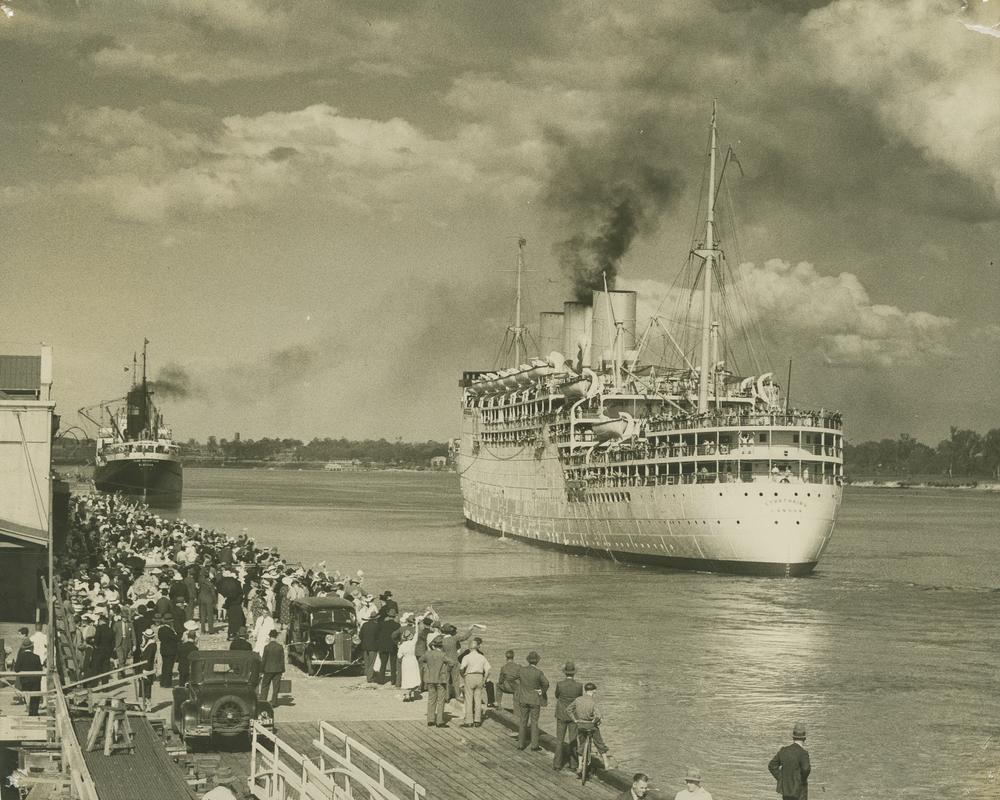
Stern view of RMS Strathaird in her original form, leaving Hamilton on the Brisbane River. Jackman, George; Contributor(s): Queensland Newspapers Pty Ltd - Item is held by John Oxley Library, State Library of Queensland.
Ocean Cruise
THE LINER STRAITHAIRD'S TRIP.
Several district folk made the trip on the P& O. liner Straithaird, which returned to Sydney on Thursday last after a successful six days' cruise to Norfolk Island.
More than eleven hundred happy, contented souls disembarked reluctantly from the giant liner as she lay at Circular Quay, and from their remarks it was apparent that this newly-introduced mode of spending a short holiday at sea captured the Australian imagination and come to stay. This, despite the fact that the liner ran into the teeth of a half gale on emerging from Sydney Heads last Friday week, and struck the tail-end of the tornado which did such severe damage at Coff's Harbor the following day. From Christmas Day onward the tourists had been one happy party. At Norfolk Island the ship's officers were faced with the difficult task of landing more than 1100 passengers in the vessel's launches, and lifeboats, transhipping them close to land into the small craft which alone could approach the jetty in safety. Despite this difficulty every passenger was landed and spent some hours roaming about the island. Every type of vehicle, from the latest motor car to the old-fashioned horse-drawn buggy, was requisitioned for the purpose. Soon after nightfall the whole of the party had re-embarked and the return voyage begun.
At a meeting held on board before the ship reached Sydney, passengers authorised a special committee to convey the following resolution, to the line: — 'On behalf of the tourist passengers on the cruise of the good ship Straithaird to Norfolk Island, Christmas, 1932, we beg hereby to express our unanimous gratitude to the P. & O. Company, commander, officers, and crew for their great kindness, courtesy, and consideration for the welfare and pleasure of the passengers. From the captain to the cabin boy we have experienced the utmost consideration and hereby tender our hearty thanks. '
In reply to a wireless message from the London office of the P. & O. Line, passengers sent off the following: — 'Your goodwill message warmly appreciated and reciprocated. Passengers offer congratulations to you on brilliant success of initial Pacific cruise, due to excellent staff work, and courtesy of commander, officers, and ship's company. All's well for 1933.'
Mr. C. Tudor Pile, Gosford, is the district agent for similar cruises being shortly undertaken, particulars of which may be obtained from him. Ocean Cruise (1933, January 5). The Gosford Times and Wyong District Advocate (NSW : 1906 - 1954), p. 12. Retrieved from http://nla.gov.au/nla.news-article167857649
Tourist Catering by the Ton
MOST important person on a tourist ship, after the captain, is the man who looks after the catering. For when it's all boiled down, the three important punctuations in the day of the tourist tripper are three hearty meals. The catering for 1200 trippers aboard the Straithaird was no mean task, and Chief Steward Denny was not sorry when the ship resumed her normal routine after the Norfolk Island invasion. To feed the multitude, 1700 head of poultry were shipped, 2700 eggs, 490 cases of different fruits, not including a special shipment of pawpaws, pineapples, bananas and mangoes brought down from Brisbane for the trip. These are only a few of the items. There were 420 dozen lettuce consumed, an average of 1000 per day; the ship's baker made and, baked 0000 rolls per day, and there were never any over; 3500 lbs. of tomatoes were, carried in cold storage; a half ton each of beef and lamb were consumed daily together with 14 cwts of fish, of which two-thirds was English and one-third Australian. For the first time, the breakfast menu of a British ship contained meat, for the chief steward, recollecting the Australian's penchant for meat for breakfast, laid in a tremendous stock of chops and steaks. And 800 chops and steaks were eaten every morning by the Australian tourists— mostly topped off with eggs. A ton and a quarter of potatoes was consumed daily, and in the six days at sea, 3000 gallons of ice cream were served. No wonder some of the passengers said they were a bit tired of food for a few days after landing. Tourist Catering by the Ton (1933, January 8). The Sun (Sydney, NSW : 1910 - 1954), p. 32. Retrieved from http://nla.gov.au/nla.news-article228906588
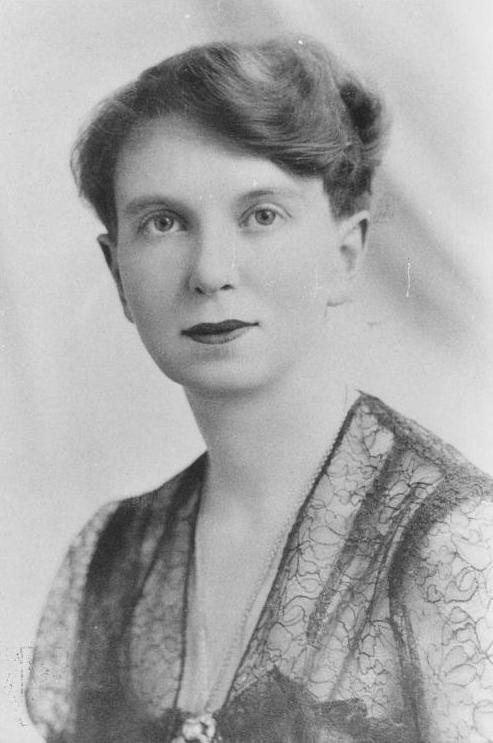 In the cabin next to the Bennett sisters was William John Dakin, a professor of Zoology at the University of Sydney, and his wife. The sisters befriended the couple and Isobel was offered a research position for a book he was writing about early whaling.
In the cabin next to the Bennett sisters was William John Dakin, a professor of Zoology at the University of Sydney, and his wife. The sisters befriended the couple and Isobel was offered a research position for a book he was writing about early whaling. LINNEAN SOCIETY.
New President Elected.
The fifty-ninth annual general meeting of the Linnean Society of New South Wales was held at Science House last night. Professor W. J. Dakin was elected president of the society for 1934. Professor Dakin has occupied the Chair of Zoology at the University of Sydney since 1928. He has had a distinguished career. Educated at the Universities of Liverpool and Kiel, he was Exhibitioner in Zoology Research Work at Heligoland. Norway, and Naples during 1908-10. Amongst numerous and diverse academic appointments. Professor Dakin has at various times occupied the positions of Lecturer in Zoology, Belfast, Liverpool, and London; Professor of Biology, University of Western Australia (1913-20); Professor of Zoology, University of Liverpool; and Examiner in Zoology to the University of London. He has done valuable research work in experimental zoology, marine biology, and oceanography, and his treatises on these subjects have attracted considerable attention. LINNEAN SOCIETY. (1934, March 29). The Sydney Morning Herald (NSW : 1842 - 1954), p. 7. Retrieved from http://nla.gov.au/nla.news-article28025287
On their return to Sydney, Isobel spent 2-3 days a week at the Mitchell Library researching captain’s logs of early whaling ships where the captain would often mark the presence of a whale at a spot by drawing a whale in his log. Her task was to understand the distribution of whales on the Australian and New Zealand coasts.
The book was published in 1934 as Whalemen Adventurers: The story of whaling in Australian waters and other Southern seas related thereto, from the days of sails to modern times, with a second enlarged edition published in 1938.
Right: Isobel Bennett, circa 1933 - Courtesy of the University of Sydney Archives. Image No.: G3_224_1412
In the meantime Isobel was applying for jobs and was offered a job with the CSIR Division of Entomology, in Canberra. Her father refused point-blank to let her go and live in such a foreign city by herself.
In May 1933 the University of Sydney’s Department of Zoology offered her a temporary job under Professor Dakin’s supervision. Isobel later recounted that when offered the job she had to look up the word “zoology” in the dictionary. In this position she became Dakin’s secretary, proof reader, research assistant and a member of the crew on the university’s research vessel, purchased in 1934, the Thistle. Isobel humorously stated in 1994 that “I was put on in a temporary capacity and stayed for 39 years”.
On the Thistle, the university's research yacht, Isobel proved herself a good sailor, fearless at scaling the heights when repairs needed to be done aloft, and hands on with everyone else when the nets were being hauled in and specimens were being preserved.
In an Australian Academy of Science interview by Ms Nessy Allen in 2000, Isobel explained:
"His (Professor Dakin)main research was plankton, the minute floating animals and plants of the sea. He had a small vessel, mainly crewed by university student volunteers, and when he discovered that I loved boats and never got seasick I was signed on as a permanent crew member – even to being hoisted up the mast to scrape it down when it needed revarnishing. On all our trips it was my job to put down the net, time it and make notes of the sea temperature and various other details, preserve the catch and take it back to the university, and then sort out what animals were in it (because neither he nor I knew). This was a rather difficult task, because there were absolutely no books of any kind available apart from details in huge tomes of various expeditions that had travelled round the world, mostly in the last century."
OUR FISH HARVEST.
The election of Professor W. J. Dakin to the presidency of the Linnean Society of New South Wales— the State's leading scientific body — is a reminder of the enormous potential wealth of our coastal fisheries that still await development. Professor Dakin has specialised in the study of marine life on the coast of New South Wales in the yacht Thistle, and his investigations have confirmed the existence of huge shoals of pilchards during May, June, July, and August. Mr. David O. Stead has also done invaluable pioneer work as an advocate of commercial fisheries and, with the backing of scientific opinion, there Is a definite prospect that something will be done to utilise this rich and extensive pisoatorial harvest. Deep sea fishing by trawling is done at present to a limited extent, but the surface fisheries, which require nets of a very small mesh, have been entirely neglected. Pilchards, anchovies, herrings, and sardines abound off the coast at certain seasons of the year. One shoal covered 30 miles of water, while a mound of pilchards washed up at Yamba Beach, at the entrance of the Clarence River, was about 150 feet in length, 30 feet wide, and three feet high! Australia's bill for imported fish over a period of three years was £377,563 for herrings, £445,248 for sardines, and £787,038 for pilchards and anchovies. OiIkt fish brought the total to 25,000,000 lb. weight of small canned and bottled fish valued at £1,609,839. It has being pointed out that the seasonal visitations of surface fish do not prevent the establishment of a prosperous industry, as salmon and other fish 'run' only for a few months annually in other parts of the world where canneries are a vital asset in national wealth. Anzac Day In Sydney (1934, May 10). The Central Queensland Herald (Rockhampton, Qld. : 1930 - 1956), p. 51. Retrieved from http://nla.gov.au/nla.news-article70564971
The 'Thistle' was kept at Pittwater outside of research sails:
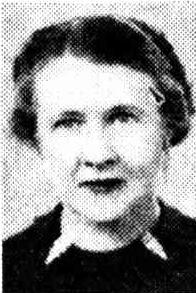 SCIENCE GRADUATE LIKE HUSBAND
SCIENCE GRADUATE LIKE HUSBANDSOCIAL worker, scientist, and sportswoman, MRS. W. J. DAKIN, wife of the Professor of Zoology at Sydney University, is head of the women's section of the Science Graduates' Spitfire Fund, which reached its £200 mark this week with a picture night at the University Union Theatre. Mrs. Dakin, a graduate in Science from the Liverpool University, England, has, like her husband, specialised in zoology, and now spends much of her leisure helping him with his collection of specimens and his books. While at the university she captained the women's hockey team, and played a little golf and tennis. For the past three years she has been president of the University's Women's Sports Association, and also does much work in connection with the University patriotic fund.
Besides knitting, reading and sewing, she also has yachting as one of her hobbies, and she and Professor Dakin spend much of their time sailing in their yacht Thistle, which they keep at Pittwater, where they also have a house. Before making her home at Turramurra she lived at Vaucluse, where she was president of the Vaucluse branch of the Red Cross Society, Another organisation for which she works is the' Rachel Forster Hospital. She has one son. now in the Air Force. PERSONALITIES OF THE WEEK (1941, March 27). The Sun (Sydney, NSW : 1910 - 1954), p. 19 (LATE FINAL EXTRA). Retrieved from http://nla.gov.au/nla.news-article231206769
In 1935 Professor Dakin took a year long sabbatical and Isobel was allowed to attend the first year zoology practical lessons, the only formal training she ever completed. In her only exam, Isobel passed with 98% and was disappointed at not gaining 100 through her omission of a 'few mouth pieces for the cockroach. During this year she also began trying to put the masses of materials into some kind of order.
1936 and Professor Dakins return meant she did not continue with the zoology classes as her responsibilities with Professor Dakin focused her attentions on marine biology. This was the year she began demonstrating to first year students and also the year Professor Dakin began his series of weekly lectures for the ABC on science. This weekly series of talks, Science in the News, involved quite a lot of research on Isobel's part.
The second edition of the book Whalemen Adventurers neede he attention too as Professor Dakin had put extra chapters in after having been overseas. Isobel also worked on getting the plankton monograph ready for publication. When World War II began Professor Dakin went to Canberra as the Technical Director of Camouflage, in the Department of Home Security. Isobel finally went to Canberra, as his research assistant.
Professor Dakin was part of an Australian self-formed wartime group of practitioners, the Sydney Camouflage Group, whose members included photographer Max Dupain and modernist painter Frank Hinder.
In 'Out of the shadows: war and the Sydney zoologist' Alison Handmer, Sydney Univeristy media, May 23, 2003, interviews Dr Ann Elias, a lecturer at Sydney College of the Arts, who had been investigating William Dakin's input:
"Camouflage is connected with illusionism," says Dr Elias. "It is a combination of deception and concealment." Professor Dakin's expertise had been honed in the study of how animals hide from their predators and prey, and he was quick to recognise that British and US methods and materials were unsuited to the Australian bush.
"Dakin devised a set of camouflage colours suited to the Australian landscape and was particularly concerned about the visibility of airfields in Australia from the air," said Dr Elias, sub-dean of post-graduate research at the SCA and a lecturer in theories of art practice.
"The group put together a little book called The Art of Camouflage, and Dakin impressed the government, which seconded him to the Department of Home Security. He chaired the Defence Central Camouflage Committee and became the Technical Director of Camouflage for Australia with responsibility for all military camouflage operations in the war."
But from the outset of the war Dakin was highly critical of the Australian military for its lack of planning, and in a letter to the Prime Minister, John Curtin, he accused the Army of bad practice with camouflage in New Guinea. He blamed the deaths of many Australian soldiers in the jungle on the incorrect camouflage colours of their uniforms.
Relocating to Canberra, he took with him from the University as his secretary Isobel Bennett, who later became a prominent marine biologist. Back in Sydney, Dakin had trained his zoology students to make camouflage nets, and others in his department organised women's groups to continue the work.
To maintain its effectiveness, wartime camouflage work was shrouded in secrecy, which is one of the reasons why Dakin's contribution remains relatively unknown.
It is during this conflict that we have clear indications that Isobel is spending time in Pittwater collecting specimens. Her notebooks, kept by the National Library of Australia, list among these papers:
Small notebook, Nov. 1944-Dec. 1945
Notes of fieldwork at Gerringong, Harbord, Newport, Mona Vale, Shellharbour, Seven Mile Beach, Pittwater, Moreton Bay, Currumbra Rocks, The Entrance
Small notebook, Oct. 1944-Nov. 1961
Notes of fieldwork at Pittwater, Gerringong, Harbord, Newport, Long Reef, Botany Bay, Heron Island, Port Sorell, Maroubra, Gunnamatta Bay, Nowra, Fairlight, Narooma, Hobart, Macquarie Island
Isobel and her sister Phyllis lived in Newport, in Myola Road, until they needed 24 hour care. Myola road, as many know, is a hop, skip and jump away from the open Newport beach and close to the north access points of the Newport Reef and rock shelves.
Isobel was also part of the University's Women's Land Army during this conflict:
"That was started by my friend Dr Helen Turner, who was working in the McMaster Laboratory. We took students up to Penrith in the cold of the August vacations and camped in the boatshed by the river. They worked on dairy and fruit farms, which were very short of labour because of the war. On one weekend Helen and I ran the dairy, dead scared that we wouldn't get the milk finished in time for it to be collected." - Australian Academy of Science interview by Ms Nessy Allen in 2000
From 1944 onwards Isobel Bennett carried out research for W.J. Dakin on the animals and plants of the Australian seashores, and estuarine beaches witha fopcus on the inter-tidal zone. Her friend Elizabeth Pope, of the Australian Museum, often accompanied her on trips south which were quite rough and meant the girls would often be camping out and up before dawn to get the low tide access to the inter-tidal zone.:
"I drew up lists for the various phyla, for the crustaceans, the molluscs, the echinoderms and those sorts of things, and in 1946 I started off, with Elizabeth Pope (from the Australian Museum), on a scientific ecological survey of the New South Wales coast. We went from Sydney down to the Victorian border, checking off my lists, and as we went south to the colder waters some animals dropped out and others started to come in.
Professor Dakin had been very ill from the end of 1945, but in 1947 he recovered enough to join us for the survey from Sydney to the Queensland border. This work was finally published in a scientific journal, and during his periods of recovering from operations he amused himself by scribbling the basis of a book on the seashore so that people of this maritime nation could know something about the animals round our coast. So that was how Australian Seashores started off." - from an Australian Academy of Science interview by Ms Nessy Allen in 2000
In 1946 a query by a radio listener, a lady whose husband was a professional fisherman at Tuggerah Lakes, sent Isobel north to investigate commercial prawns. The lake had been closed off for a few years and as prawns go to sea to spawn prior to the larvae and eggs coming back into estuaries and lakes to grow to adult size.
"We did eventually find that one species was capable of breeding in the lake, but the others definitely went to sea. After his (Professor Dakin) unfortunate death I finished that work, with one of the students, and we published a paper on the life history of this particular small prawn."
The fact that prawns must get to sea also quickly altered fishing practices in the region, one of several changes this lady caused to occur which she consistently played down throughout her career.
1946 was also her first visit to the Great Barrier Reef to collect photographs and specimens for a series of articles Professor Dakin was doing on the Reef for Walkabout magazine.
In December 1948 Professor Dakin retired. Angus and Robertson accepted the manuscript of Australian seashores, but due to a publishing backlog post-war, it was not published until 1952.
In November 1948 a new Professor of Zoology, Professor Patrick Desmond Fitzgerald Murray, was appointed and Isobel became his secretary:
"...his research was completely different. He was interested in the development from cartilage into bone, and all he wanted me to do was to use a microtome and make microscope slides of tissues from the embryos of chicks, turtles and things like that. (Again I was fortunate, because Professor Dakin had taught me the mystique of such things.) Professor Murray said that so long as the marine work I had been doing with Professor Dakin didn't take up too much of my time, I could go on doing it.
The Professor had envisaged the whole of south-eastern Australia, so Elizabeth Pope and I, with help from Miss Macpherson (from the Victorian Museum), did the same kind of survey along the coasts of Victoria and Tasmania as for New South Wales. Quite a lot of the Tasmanian coast we had to do with the aid of the Commonwealth lighthouse ship, because in those days there were no roads and no means of access to many of the rock platforms. We did trips in the lighthouse ship right down to Maatsuyker Island in the south-west and along the north-west coast as well." - from theAustralian Academy of Science interview by Ms Nessy Allen in 2000
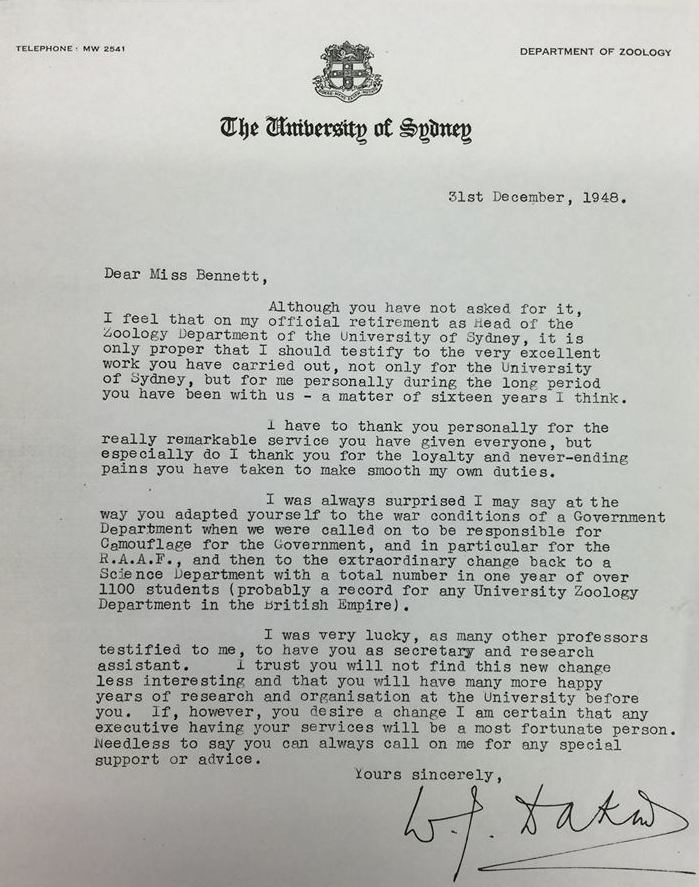
Letter/ Reference for Isobel from Professor Dakin on his retirement
William Dakin passed away on April 2nd, 1950 at his Turramurra home after a long battle with cancer. His contribution to Australia including not only all his research and the materials that resulted, but also a focus on making science accessible for all and exhorting all in Australia to begin caring for the animals here, championing conservation of land for fauna or protection of whales decades before bans on whaling. His research informed his debates and definitely inspired Isobel who, being a scholarship winner from an early age, clearly also had a good mind to guide her own heart.
At its monthly meeting last night the Senate of the University of Sydney gratefully accepted the following gifts and donations -
Mr. Frank Albert: £20 annually to the Department of Music to provide a prize of £5 for the best student in each year of the music course.
Mrs. C. M. G. Dakin and Dr. Harvey Dakin. To the Fisher Library a collection of books from the library of the hie Professor W J Dakin, consisting of 80 volumes in the fields of animal anatomy and physiology and sundry University publications.
Drug Houses of Australia, Ltd . £700 per annum for in initial period of five years for a research fellowship in pharmacology...University's Thanks For Gifts (1950, October 10). The Sydney Morning Herald (NSW : 1842 - 1954), p. 7. Retrieved from http://nla.gov.au/nla.news-article18172108
Isobel pursued finishing the Australian Seashores book, complete with indexes and photographs. In its first printing of 3500 copies, it was sold out within a few short weeks.
Two Marine Scientists Took Seven Years To Write Their Book
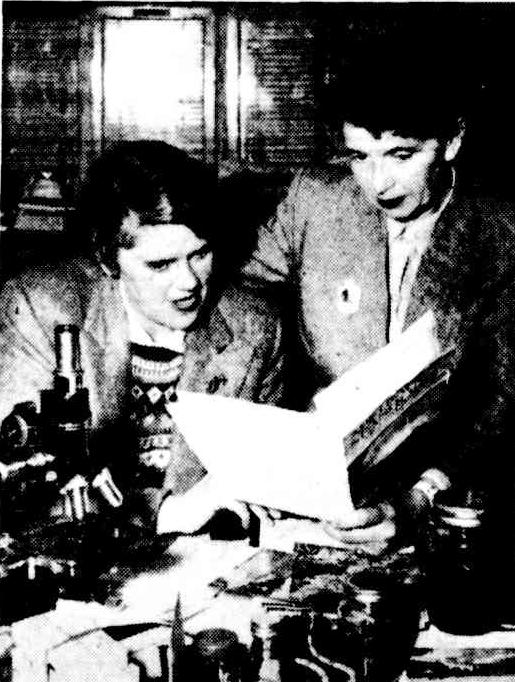
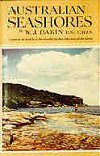 MISS ELIZABETH POPE (left) and MISS ISOBEL BENNETT checking the first unbound copy of their new book, at the Australian Museum this week.
MISS ELIZABETH POPE (left) and MISS ISOBEL BENNETT checking the first unbound copy of their new book, at the Australian Museum this week.TWO excited women scientists, both marine zoologists, Miss Isobel Bennett and Miss Elizabeth Pope, are now checking the publishers' first unbound copy of a book, "Australian Seashores," on which they have worked for seven years.
Miss Pope is the Assistant Curator of Crustacea at the Museum, and Miss Bennett is a Research Assistant in the Zoology Department of Sydney University. They have worked together in science, and been the closest friends, for 20 years.
Their book is the first of its kind in the Commonwealth. With scores of pictures and almost 400 pages, it deals with all living things that are most commonly found along our beaches, reefs, ocean front and estuaries-with the sole exception of fish.
It is a popular work, intended for beach lovers, fishermen, naturalists.
"Our book is really the joint work of a team, which originally comprised Professor W. J. Dakin, who was Professor of Zoology at the University, Miss Pope, and myself," said Miss Bennett.
"It has taken us seven years to complete.
"After the death of Professor Dakin in 1950, we two carried on the task.
"In a large sense, our work was pioneering because so much of the information we needed was quite unknown when we started.
"We have travelled thousands of miles in our explorations of the coastline from Queensland to South Australia."
"And we've had lots of fun and excitement along with the serious work," Miss Pope chipped in.
"Miss Bennett is made of sterner stuff, but I was seasick on several occasions. We have gone out into the field in everything from fishermen's boats to airliners.
"We had lots of crazy little trips to coastal islands and lighthouses-and in one place we had to be let down over a cliff on a rope.
"Our faces were often red from sunburn; our fingernails torn and scratched; and our skin chapped by never-ending winds-in all seasons and weathers," Miss Pope added. Two Marine Scientists Took Seven Years To Write Their Book (1952, September 14). The Sunday Herald (Sydney, NSW : 1949 - 1953), p. 19. Retrieved from http://nla.gov.au/nla.news-article18506868
Seashore Secrets
AUSTRALIAN SEA- SHORES, by William J. Dakin, Isobel Bennett and Elizabeth Pope.-Angus and Robertson, Sydney.
ABOUT this time every year, Australians head en masse in the direction of their Mecca, the surf.
There, by long-established custom, they are swept out by undertows, tangled in seaweed, stung by bluebottles, or dumped in the surf.
Those who have the energy of the very young or the philosophy of the old poke about among the flotsam and jetsam of the beach and peer down into the mysteries of rock-bound pools. A few patient folk try their hands at fishing.
Until now, these pilgrims have had no readily available sourcebook of general scope to help them unravel the secrets of our seashore and of the surf between the tides.
"Australian Seashores" is a long-awaited answer-the fulfilment of a dream of a young Englishman named William John Dakin, who made his home in Sydney more than 20 years ago, and who regrettably did not live to see that dream realised.
In 1929, Dakin was appointed to the Professorship of Zoology at Sydney University, in which he remained until retirement 19 years later. His professional career as a scientist was moulded in the universities of Britain and the Continent; from 1913 he spent seven years at the University of Perth.
Dakin had a passionate regard for the sea: to him it had "an almost magnetic attraction."
Through his decades here, he probed Australia's seashores for thousands of miles in fair weather 'and foul. Much that he discovered was new to our knowledge of marine life.
Later, he was joined in his work by two of his keenest and most able students. Miss Isobel Bennett and Miss Elizabeth Pope. This trio of zoologists decided to make a permanent record of their field and laboratory researches, a vast undertaking that is now presented in "Australian Seashores."
PROFESSOR DAKIN died two years before their teamwork was complete, but with unflagging enthusiasm and skill. Miss Bennett and Miss Pope have carried the job through to finality.
This book is "a guide for the beach lover, the naturalist, the shore fisherman and the student" -the first study of its kind produced in Australia, and undoubtedly a landmark in the history of our sciences. Perhaps the most striking feature of this magnificent volume is the rare feast of pictures, with several pages in brilliant natural colour. A total of 100 pages, or close to one-third of the number of text pages, is devoted entirely to photographs.
Many of the animals and plants here arc shown to the public for the first time in pictures. It would have been a help, however, if the appropriate scale size had been made conspicuous on all plates. A detached reference to size in the illustrations index is inadequate for the uninitiated. The authors have made a sympathetic effort to render the technicalities of science and its language into a more acceptable popular form, but there are pages of "heavyweight" material that may repel first glances.
The real worth of this book to the unskilled reader, it seems, is in the help it can give in identifying the many hundreds of different kinds of our sea animals and plants. In this, the inquirer should make full use of the excellent general index.
The opening chapters cover the broad canvas of the sea itself; its formation, depths, temperatures, currents and tides, and chemical make-up.
The reader is taken in orderly succession thence to descriptions of the plankton (the sea's smallest sparks of life), and through chapters, on seaweeds, sponges, jellyfish, anemones, corals, worms, starfish, sea-urchins, seasquirts and their innumerable relatives.
More space is given over to lobsters, prawns, crabs and other crustaceans than to any other species, and sea-shells are also prominently featured.
Such a wealth of factual and entertaining reading is packed between the covers that it is difficult to highlight any particular page of it. -KANANGRA. Seashore Secrets (1952, December 20).The Sydney Morning Herald (NSW : 1842 - 1954), p. 8. Retrieved from http://nla.gov.au/nla.news-article18295910
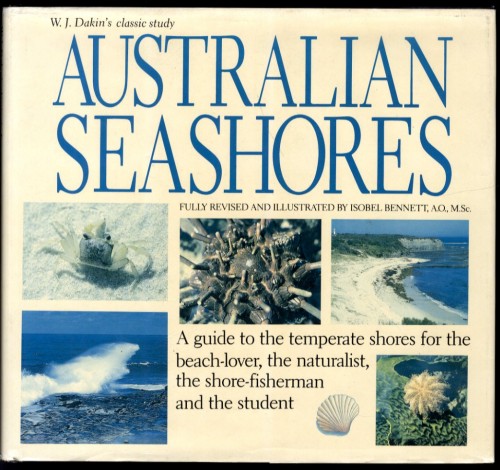 Australian Seashores was reprinted, revised and metricated another 11 times over the years. It is still sought by everyone who loves the sea and secondhand editions are hard to come by. Isobel had to update the book with current taxonomic work and scientific names.
Australian Seashores was reprinted, revised and metricated another 11 times over the years. It is still sought by everyone who loves the sea and secondhand editions are hard to come by. Isobel had to update the book with current taxonomic work and scientific names. In 1986 Isobel a request to produce a completely revised edition to cover all of the Australian States and replace the black and white images with colour. Isobel wrote to a colleague when approached that “I was so appalled at the enormity of the task, especially at my age (now 83), that I refused point blank”. However she did take up and complete the task adding 500 coloured photographs which she travelled to collect specifically for that edition.
In 1952 Isobel was part of this voyage:
A 50,000ft line to catch sea-serpents
FACT'S London Bureau
Eleven scientists and 94 sailors put to sea in the 1300-ton frigate Galatheafrom London this week to explore the third of the globe men know least about. It lies under the world's oceans between the depths of 14,000 and 40,000 feet. Expedition leader is Danish Dr. Anton Brunn, of Copenhagen University. He hopes to find a sea-serpent and specimens of fish and plant life regarded as extinct for 80-million years. Among the crew is the King of Denmark's nephew, tall, young Count Flemming, of Rosenborg, formerly Prince Flemming. He gave up his royal privileges to marry a commoner. The Galathea will be away two years, will reach Australia by Christmas, 1951, when two Australians, as yet unnamed, will join the search.
Lost continent
The expedition's first job will be to take soundings off the West African coast to test theories about the lost continent of Atlantis. Their equipment includes a 50,000ft fishing line, a huge hawser for lowering magnetic . instruments to check on gravity forces, special tubes to grab samples of ocean floor. The scientists' chief hope lies in the Philippine Abyss , a seven-mile-deep stretch off the island of Mindanao. Funds for the deep-sea search, Denmark's sixth such venture in 100 years, came from donations and a legalised blackmarket in tobacco, films and bananas. Total collection was £125,000-Giant eels, that slither through the deepest ocean mud, are expected to explain, once and for all, history's innumerable reports of sea-serpents. A 50,000ft line to catch sea-serpents (1950, October 29). The Sun (Sydney, NSW : 1910 - 1954), p. 17 (COLOR TUGBOAT ANNIE AND GLENCANNON). Retrieved from http://nla.gov.au/nla.news-article229625048
The Galathea, of 1300 tons, was formerly the British sloop Leith. At some ports scientists joined in the cruise and investigations and this helped with the costs of the epic voyage seeking knowledge. She carried 11 scientists, who had a well-fitted laboratory for their studies. Dr Anton Bruun, from the University of Copenhagen, was Denmark's leading oceanographer,. Students and sailors doing their National Service comprised most of the Danish seamen. Isobel was able to see their methods first and even did some work for them.
In 1954 she went north again when the University of Queensland and the Great Barrier Reef Committee sent an expedition to Low Isles, where her previous visits and work in the Whitsundays and Heron Island stood her in good stead. Isobel worked with Professor Stephenson and Dr Robert Endean, producing an ecological survey of the intertidal Reef which was published.
Isobel also went south as well in 1954 to collect more data to incorporate into an updated edition of Australian Seashores:
Lighthouse Ship Journey
To Collect Molluscs
A CRATE of seaweed and four tanks of shell-fish were the souvenirs which Miss Isobel Bennett brought back to Sydney after a 1,200 mile voyage around Tasmania's east coast. For Miss Bennett is a zoologist and her trip was not a holiday but a scientific expedition to discover what plant and animal life lived on the exposed coastal rocks.
As a research worker with the Sydney University Department of Zoology Miss Bennett has already explored the New South Wales and Victorian coastline, but for her survey of Tasmania she had to travel by ship because most of the places she wanted to visit were inaccessible by land.
So with Miss Hope Macpherson, curator of molluscs at the Melbourne National Museum, and the assistant director of the museum, Mr. C. W. Brazenor, Miss Bennett' joined the lighthouse ship, Cape York, on its round-Tasmania run.
The ports of call were isolated lighthouse stations
fawn plastic trousers and hats, with a track suit under-neath for warmth.
"But with a wind blowing from the Antarctic and our feet in*the water for a few hours we used to get a bit chilly all the same," she said.
"We used long-blade knives to prise the specimans off the rock and stored them in jars until we returned the ship, then we would through the day's findings classify them and put them in formalin."
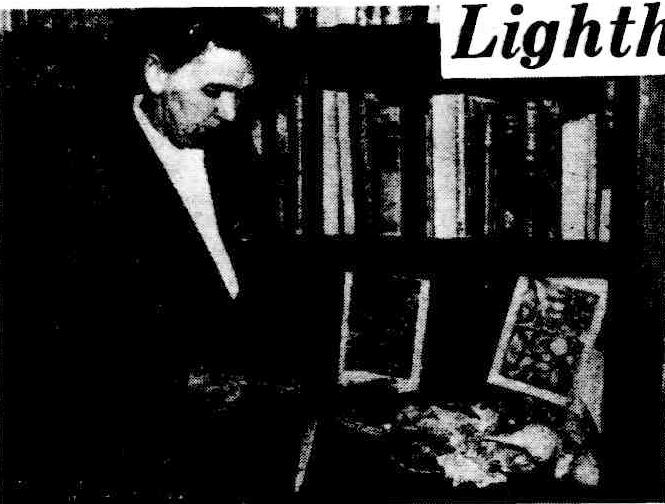
Photo MISS ISOBEL BENNETT, a research worker with the Department of Zoology at Sydney University, with some of the specimens of plant and animal life she has collected from the Australian coastline. She has just returned from a survey of the east coast of Tasmania, made in the lighthouse ship Cape York, and her findings will supplement the book, "Australian Seashores," which she published with the late Professor J. Dakin.Lighthouse Ship Journey To Collect Molluscs (1954, July 25). The Sun-Herald (Sydney, NSW : 1953 - 1954), p. 60. Retrieved fromhttp://nla.gov.au/nla.news-article12646437
In 1956 Isobel took long-service leave on half pay which enabled her to extend 6 months to 12 months and provided an opportunity for her to pursue her passion through visiting marine stations and universities overseas:
" I had to give some lectures, a few of which were rather terrifying. In particular, at Columbia University, in New York, I discovered that just down in front of me I had one of the world's leading professors of genetics and a few other people like that. Also, one of the professors had to go home and bring back his projector for my slides, because the university's machine did not work. And at Yale University nobody could produce a projector that worked. "
Tasmania was classified as 'cool' - Isobel and her cohorts wondered what 'cold' seas would produce. They began working on obtaining permission to visit the then men-only Macquarie Island and were fortunate to gain permission to travel in the resupply vessel in 1959.
These four ladies were the first women to work on Macquarie Island; Susan Ingham, Isobel Bennett, Hope Macpherson and Mary Gillham arriving on the Danish Polar vessel the Thala Dan for resupply in 1959. They were warned that on their "behaviour rested the future of our sex with regard to ANARE voyages". Despite this, these four pioneers set the way with women being present on most resupply voyages to Macquarie Island.
'ANARE': Australian National Antarctic Research Expeditions.
Hope Macpherson was the first female curator at National Museum of Victoria (now Museum Victoria). Promoted to Curator of Molluscs in 1946 after completing a Science Degree part time at Melbourne University, she continued in this role until 1965, when she was required to resign from the Victorian public service as a result of the prohibition on the employment of married women known as the Marriage bar. After leaving the Museum Hope retrained as a science teacher, spending 13 rewarding years teaching in Victorian country high schools, her career providing an example to girls of the opportunities for them in science.
In 1947 Hope was part of the Museum team which used pack horses to survey the Snowy River Gorge, prior to dam construction and water diversion of the Snowy Mountain Hydroelectric Scheme. Hope also led the Museum's participation in ground-breaking marine biological surveys of Port Phillip Bay from 1957-1963. The baseline data provided by the Port Phillip Bay Survey is still in use today by environmental scientists, managers and planners, providing a benchmark against which to monitor environmental changes.
In conjunction with the Country Roads Board, CSIRO and Australian Paper Manufacturers she investigated the impact of the shipworm Teredo, (a marine bivalve mollusc which bores into wooden structures including bridges), in eastern Victoria and South Australia. She also undertook a survey of the edible molluscs in Victoria to determine the quantities of various species and the feasibility of the establishment of commercial fisheries. - by Ms Rebecca (Bec) Carland; Curator History of Collections at Museum Victoria.
Dr. Mary Gillham MBE was an English naturalist, university lecturer, and writer, who was resident for many years in Gwaelod y Garth and then Radyr, in Cardiff, Wales until her death. Her major research projects were around the coasts of West Wales, Australia, New Zealand, and South Africa. As a post-war student in the University of Wales at Aberystwyth and Bangor, she gained a degree in agriculture, a first-class honours in botany, and a doctorate in island ecology. She lectured in the universities of Exeter (Devon), Massey (New Zealand), Melbourne (Australia), Kano (Nigeria).
Spray-washed seabird colonies were her main love, and research on these took her to remote islands in many parts of the world, where she has lived in tents, huts, lighthouses, etc. - from Wikipedia
Susan E. Ingham has co- authored or been lead author on numerous papers for the CSIRO as part of their then Division of Wildlife Research.
See New Records for Antarctic Stations, Studies on the southern elephant seal, Mirounga leonina (L.). I. Introduction to the series (1962), or A key to the species of Mugilidae (Pisces) in the Northeastern Atlantic and Mediterranean, with explanatory notes (1972)
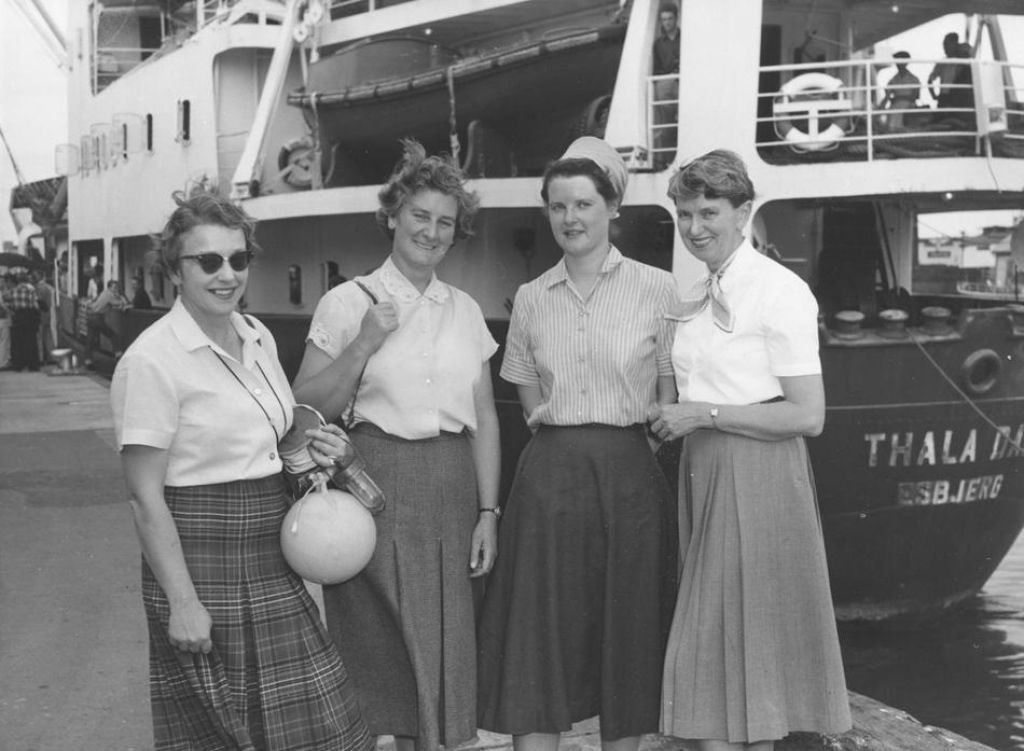
Left to right: Hope Macpherson, Mary Gillham, Susan Ingham and Isobel Bennett: before boarding the Thala Dan in December 1959. From the Museum Victoria Collections - Item MM 118792 http://collections.museumvictoria.com.au/items/1789836
" Then, in early 1960, I happened to meet Dr Law in Sydney and mentioned that we had had very little time to do what we wanted to do and would like to go again if possible. So I went in 1960 and again in 1964. And in 1968 I went again, at the request of the Antarctic Division. The biologist they were sending down was going to work on the seashore and also had to assist with a lot of other projects, and they thought that he would have a head start if I accompanied him and showed him all that I could." - Australian Academy of Science interview by Ms Nessy Allen in 2000
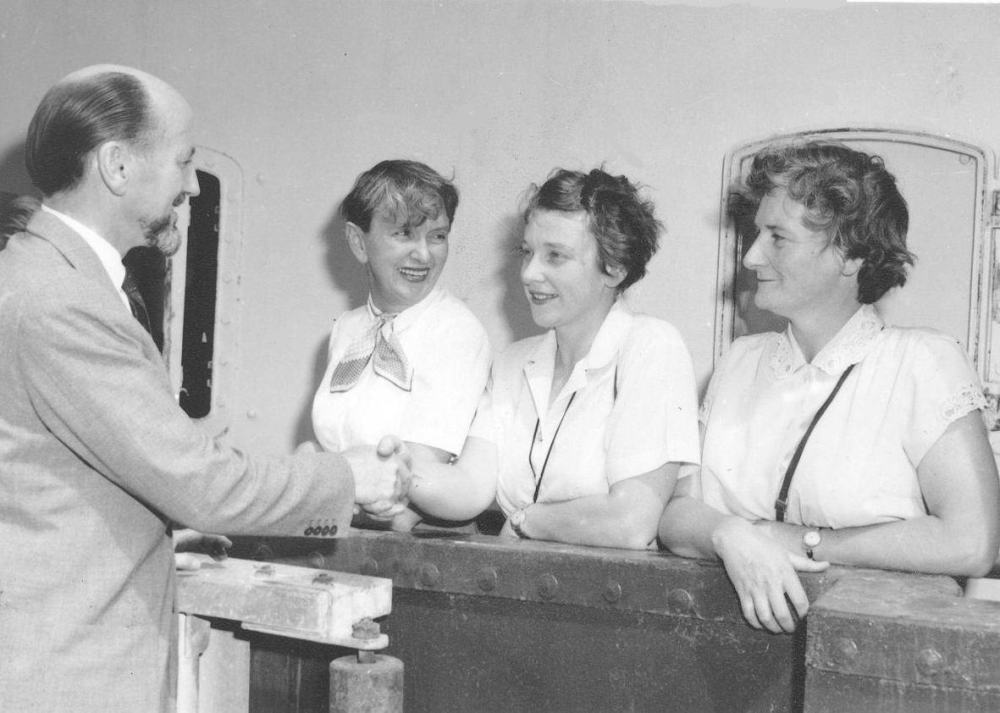
Dr. Phillip Law farewell's first party of female scientists to study in the Antarctic, Dec 1959 Source: Museum Victoria. Item MM 118784
From 1959 to 1971, Miss Bennett was a Professional Officer at the University of Sydney, receiving the first Honorary Master of Science from the University of Sydney in 1962. She was a temporary Associate Professor at Stanford University in 1963 and travelled across the Pacific on the twin-masted schooner Te Vega lecturing to students.
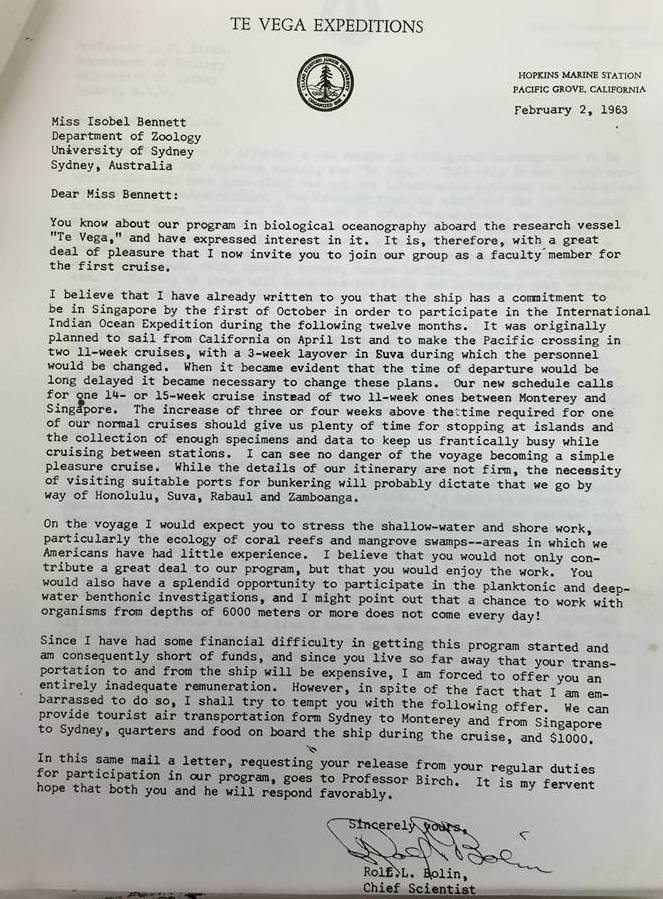
In 1966 she was a delegate to the 11th Pacific Science Congress in Tokyo. During a return trip to Tokyo in 1967 an invitation for an audience with the Emperor of Japan, also a marine biologist, was issued.
Isobel attended the 1972 by the Royal Society of London and the Royal Society of Edinburgh meeting to celebrate the centenary of the HMS Challenger's trip around the world. Isobel considered that "one of the most outstanding scientific exploration trips ever done." and the 13th Pacific Science Congress in Vancouver (1975).
Isobel continued returning to or taking students to the Great Barrier Reef at every available opportunity, often working alone and at her own expense. Over time her research covered the full 2000km span of the Reef. Many ascribe Isobel’s work on the Reef as fundamental in its 1980 recognition as a UNESCO World Heritage Site.
Isobel 'retired' in 1971, remaining an active author and researcher, On the Seashore (1969) Shores of Macquarie Island (1971) The Great Barrier Reef(1971) A Coral Reef Handbook (1978) Discovering Lord Howe Island (1979) Discovering Norfolk Island (1983) and Australia's Great Barrier Reef(1987) all still referred to and cited as definitive resources appearing in the lead into and years after she finished working at Sydney University. On the Seashore (1969) was apparently written between 9 at night and 3 a.m.so as not to interfere with her daytime jobs!
Long Reef was described by Newport's Isobel Bennett, by then one of Australia’s pioneering marine biologists, as a ‘living museum’.
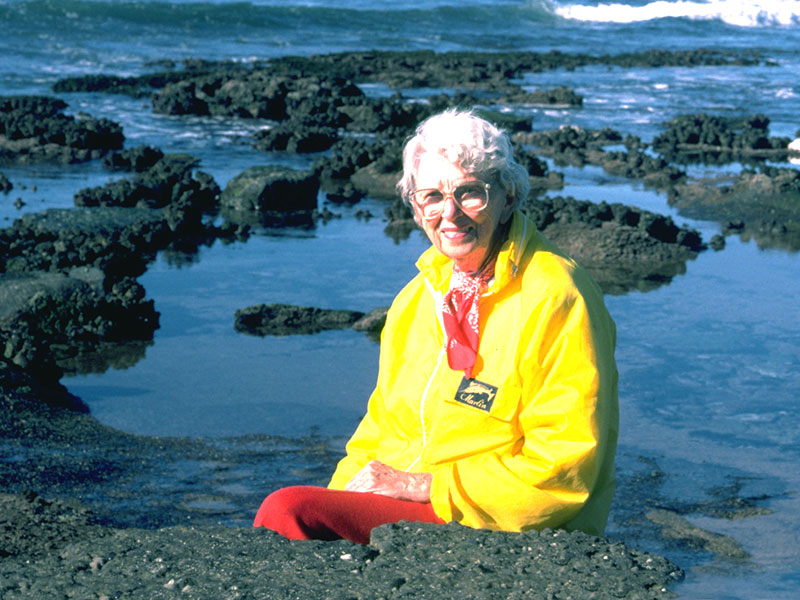
Isobel Bennett - photo courtesy NSW DPI
By the 1970s Long Reef’s aquatic flora and fauna had become seriously depleted due to intensive collection for food and bait. In 1974 a scientific team from the Australian Museum, including Isobel Bennett, Elizabeth Pope and Phil Colman began a campaign to protect Long Reef for scientific research and education.
Long Reef was declared an aquatic reserve in 1980 - with 40th anniversary celebrations occurring at present.
From 1974 to 1979 she worked with the New South Wales Fisheries Department, and during that time, carried out fieldwork and surveys at the coastal rock platforms at Jervis Bay and Ulladulla, and on the coasts of Lord Howe Island, Norfolk Island and Flinders Island.
At the ANZAAS meeting in 1982 she was the second Australian woman given the Mueller Medal, named after Ferdinand von Mueller, the German/ Australian botanist who was Director of the Royal Botanic Gardens, Melbourne. Dorothy Hill, AC, CBE, FAA, FRS, an Australian geologist and palaeontologist, the first female professor at an Australian university, and the first female president of the Australian Academy of Science, preceded her in 1967.
Other awards include three of the Royal Zoological Society's Whitley Award; the Great Barrier Reef, for natural history photographs, The Australian Seashores, for best text and the third edition of A Coral Reef handbook received the Whitley Award for best handbook - as co-editor.
In 1984 Isobel was made an Officer of the Order of Australia, for her 'services to marine biology'.
She was awarded an honorary Doctor of Science in 1995 from the University of New South Wales.
Recently the Hermon Slade Raiatea Foundation established the Isobel Bennett Marine Biology Fellowship for research at the Australian Museum Lizard Island Research Station - named in recognition of Dr Isobel Bennett AO.
Isobel Bennett Reef 21-505 was formally named after Dr Isobel Bennett AO on 13 October 2008 by the Great Barrier Reef Marine Park Authority. One genus and five species of marine animals are also named for this lady.
Closer to home, Dr Bennett was focused on foreshore conservation issues and was the driving force behind educational signage seen at many sites on Sydney's coastline. The Long Reef Aquatic Reserve was declared primarily to protect the marine invertebrates and sub-tidal marine plants and animals. Isobel Bennett's work on Sydney’s rock platforms led to the establishment of the Aquatic Reserve in 1980 by the state government. The then Fisheries Department and Warringah Council working together to place signage about aquatic reserves and the aquatic animals using Isobel's slides.
Long Reef remains a popular educational walk offered to families and schoolchildren.
The reserve covers an area of approx. 60ha from the high water mark out to 100m from low water, extending from the Collaroy rock pool south to Long Reef Surf Club on Long Reef beach. - http://reefcarelongreef.org.au/walk-sections-rock-platform/
In 1987, Isobel wrote: 'Not until more marine parks are established and people are made aware that our seashores and their inhabitants are irreplaceable treasures, will there be any future for them.'
Retrieved from: http://www.dianagieseeditorial.com.au/files/REVISED-On-the-Fringe-of-the-Sea-NLA_News-Sept99.pdf
In 1999, March 21 to 28, Project AWARE on the Rocks was launched. Encompassing the Project AWARE on the Rocks Information Kit, followed by an interpretive walk on the Narrabeen Intertidal Protected Area rock Platform, the special guest for this event was announced as 'renowned marine scientist, Dr Isobel Bennet, AO.' This was run through the Coastal Environment Centre at Narrabeen.
"The Pittwater Council have a very good Coastal Environmental Centre and some very active people. They've been using me as an honorary consultant. I was able to give them some help with their project 'Foreshores', which was sent out with a lot of detailed information to all primary schools around the State. Then about four years ago they started another project, 'Project AWARE on the Rocks', training volunteers to take people out on the rock platforms. This has been very, very successful, and they have got a grant to carry on the work. This is the sort of thing I have always wanted to happen, and I have been very happy to do all I can to help them make it happen.
Also, I donated the slides I had left – about 400 – to the council. Those have been made into a very beautiful CD ROM which is available through the Environment Centre. In addition, the council have had interpretive books made of aluminium, bolted down onto huge rocks which were put at Mona Vale, Newport and Palm Beach. I believe that other councils are very interested in putting them on too, to explain about the rock platform and the animals that are there." - Australian Academy of Science interview by Ms Nessy Allen in 2000
Educational Walks on Narrabeen Rock shelf are still offered through the CEC. Visit Coastal Platform Tour
Dr. Isobel Bennett passed away in January 2008 at a nursing home here, in Pittwater, after her devoted sister Phyllis could not look after her any longer. Like her sister Phyllis devoted herself to others, receiving an OAM in 2000 for 'For service to the community, particularly through the Voluntary Aid Services Corps and the Australian Red Cross.'
The contribution of Dr. Isobel Ida Bennett to our knowledge of the inter-tidal area, her striving to ensure the conservation values held by Professor Dakin and herself were upheld, and their impact on what we have today, cannot be overestimated.
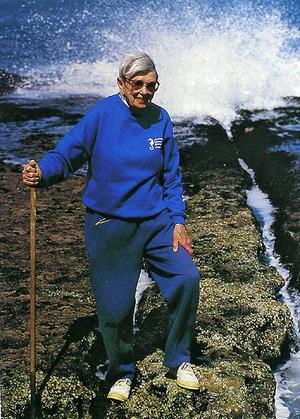 Isobel is still an inspiration to young women who wish to pursue science in marine biology, or any other science discipline. Laws about what women can and can't do, should or shouldn't do, whether married or not, have changed. The changes she saw in her 98 years were immense - and her work brought about shifts that were positive, that contributed with passion and adherence to being meticulous.
Isobel is still an inspiration to young women who wish to pursue science in marine biology, or any other science discipline. Laws about what women can and can't do, should or shouldn't do, whether married or not, have changed. The changes she saw in her 98 years were immense - and her work brought about shifts that were positive, that contributed with passion and adherence to being meticulous. Len Zell, adjunct senior lecturer in marine and tropical biology at James Cook University, paid tribute to Isobel with:
"She achieved high standing as an Australian marine scientist, not by education, but by sheer hard work, determination, attention to detail and a never-ending curiosity that tired me out lifting boulders on many reef flats,"
"The last time I was on Heron Island with her she was in her eighties, and we spent hours out on the reef flat turning boulders and photographing and discussing the critters there.
"The tide beat us and I had to carry her the last hundred metres to the beach. I was exhausted, but her enthusiasm drove me on." - January 13, 2008.
What we have because of Isobel is a foundation of knowledge previously absent, thousands of beautiful images of her favourite nudibranches and every other 'critter' that lives beside the sea and these all accrue to make one beautifully colourful and positive Vision we would do well to be good custodians of.
If science must prove, through studies, published papers and volumes of books, that we cannot treat so recklessly what we find so beautiful, nor think everything in the natural environment is infinite and will infinitely bounce back to pristine from the worst abuses, then Miss Bennett and those women who worked beside her, and the Professors they worked for and learned from, have given us more proof, or proving, of the logical creed.
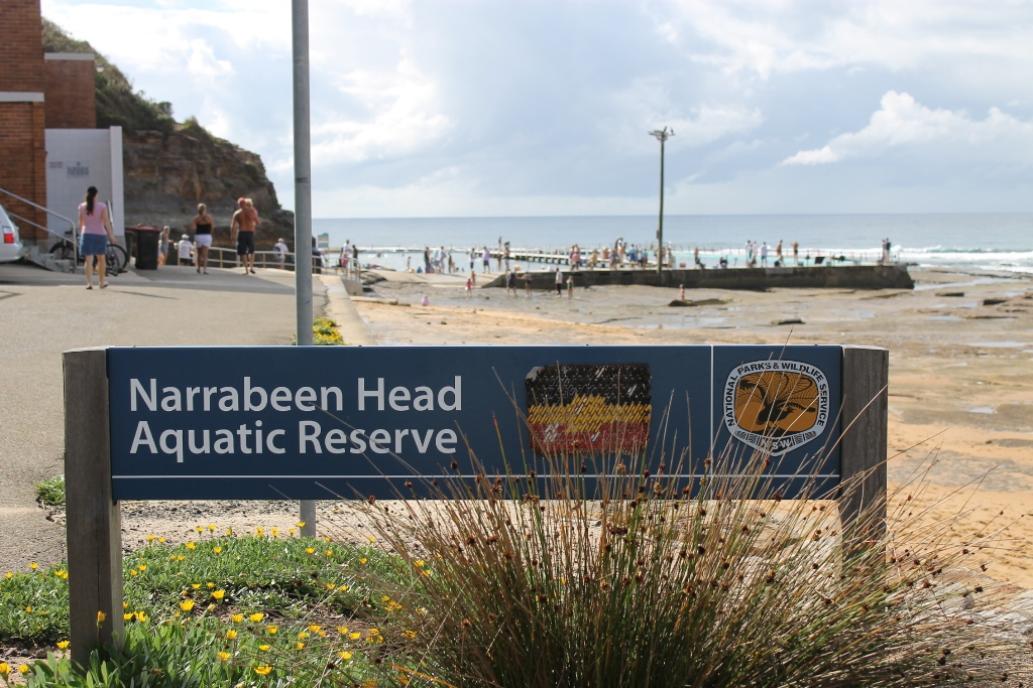
Notes and References
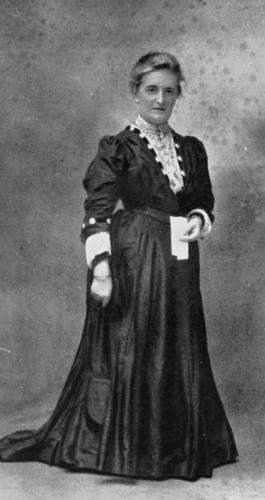 The Brisbane High School for Girls (later to be known as Somerville House) was established with 39 students on Wickham Terrace, by Eliza Fewings in October 1899.[5] The early school consisted of a large Assembly hall, drill hall, and a number of separate classrooms, with the four founding boarders living with Fewings at her home, "Glen Olive", in Toowong. Fewings, who had previously been Headmistress of the Brisbane Girls Grammar School,[12] but after being dismissed, decided to open her own school, she aimed to create a school community where girls could be educated and equipped with social graces, and would be able to take a leading role in the management of the nation. Based on English models, within three years it became the largest girls' secondary school in Queensland, with 150 students.
The Brisbane High School for Girls (later to be known as Somerville House) was established with 39 students on Wickham Terrace, by Eliza Fewings in October 1899.[5] The early school consisted of a large Assembly hall, drill hall, and a number of separate classrooms, with the four founding boarders living with Fewings at her home, "Glen Olive", in Toowong. Fewings, who had previously been Headmistress of the Brisbane Girls Grammar School,[12] but after being dismissed, decided to open her own school, she aimed to create a school community where girls could be educated and equipped with social graces, and would be able to take a leading role in the management of the nation. Based on English models, within three years it became the largest girls' secondary school in Queensland, with 150 students.
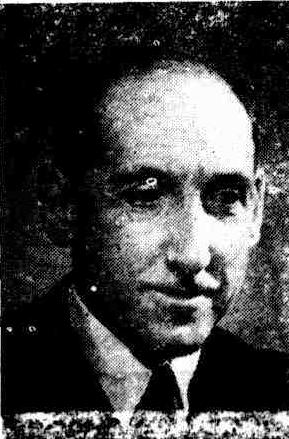 Professor W. J. Dakin
Professor W. J. Dakin
In addition to the editions of Australian Seashore, Bennett wrote the following books;
On the Seashore (1969)
Shores of Macquarie Island (1971)
The Great Barrier Reef (1971)
A Coral Reef Handbook (1978)
Discovering Lord Howe Island (1979)
Discovering Norfolk Island (1983)
Australia's Great Barrier Reef (1987)
Long Reef Fishcare Educational Walks
Long Reef Aquatic Reserve, on Sydney’s northern beaches is a unique environment due to its geology and exposure to all four points of the compass. Protecting a huge variety of marine animals, birds and plants, it’s a great place to enjoy learning about our natural environment.
Department of Primary Industries NSW Fishcare Volunteers offer free, guided, educational walks onto the rock platform where in just two hours you’ll observe some of the vast variety of marine life.
You’ll also gain an understanding of the geographical features of the area, look at trace fossils and learn why some migratory birds travel tens of thousands of kilometres from Siberia and Japan to spend time at Long Reef.
An ideal family outing!
More information: www.reefcarelongreef.org.au
WEDDINGS
Bennett-Moody.
A pretty wedding was celebrated in the Mowbraytown Presbyterian Church yesterday afternoon. The bridegroom, Mr. Islay P. C. Bennett, is the son of Mr. and Mrs. F. J. Bennett, of East Brisbane, and the bride, Miss Edith Ferguson Moody, is the eldest daughter of the late Mr. C. J. Moody, and Mrs. Moody, Mowbraytown, East Brisbane. The Rev. George Ewan, M.A., officiated. The church was prettily decorated for the occasion, and the wedding party stood under a handsome white bell. The bride, who was given away by Mr. C. Patterson, of Gympie, wore a beautiful gown of ivory silk, inlet with French Valenciennes lace, and point lace braid. It was arranged with a semi-Empire train. She also wore a handsome tulle veil, lent for the occasion by an old friend of the family, and carried a shower bouquet, the gift of the bridegroom. Misses Daisy Moody and Trixie Moody, sisters of the bride, attended as bridesmaids. The former wore a dainty costume of white muslin, trimmed with insertion, and a Leg-horn hat, trimmed with pink and heliotrope hydrangeas, and the latter a pretty muslin costume, inlet with Valenciennes, and a Miss Hook of Holland hat. Both carried shower bouquets of pink roses, the gift of the bridegroom. After the ceremony Mrs. Moody entertained the guests at a reception at her residence. Mrs. Moody, mother of the bride, wore a costume of black chiffon taffeta, trimmed with Chantilly lace and a white toque, swathed with Saxe blue, and finished with osprey. Mrs. Bennett, mother of the bridegroom, was also handsomely gowned in black, with sleeves and yoke of tusked lace; stylish toque, 'relieved with pink. Mrs. Patterson, gray striped silk, tidily trimmed with lace; ...WEDDING. (1908, October 8). The Brisbane Courier (Qld. : 1864 - 1933), p. 7. Retrieved fromhttp://nla.gov.au/nla.news-article19543641
DEATHS
BENNETT - On the 20th October, at her residence, Francis Estate, Corinda, Edith Ferguson Bennett, dearly loved daughter of Isabella and the late Charles James Moody. Family Notices (1918, October 25). The Brisbane Courier (Qld. : 1864 - 1933), p. 6. Retrieved from http://nla.gov.au/nla.news-article20242810
Islay Percy Colquhoun Bennett is to be a clerk, on probation, in the Department of Public Lands (head office) Official Notifications. (1903, February 2).The Telegraph (Brisbane, Qld. : 1872 - 1947), p. 3. Retrieved from http://nla.gov.au/nla.news-article172837240
Mrs. Islay Bennett, Erehwon, Stanley terrace, East Brisbane, will not be at home on Thursday, nor again until after the summer months. Social and Personal (1910, December 7).The Telegraph (Brisbane, Qld. : 1872 - 1947), p. 8 (SECOND EDITION). Retrieved from http://nla.gov.au/nla.news-article177760534
BENNETT Islay P C -August 12 (suddenly) at his residence Pacific Highway St Leonards beloved husband of Ethel and dear father of Isobel Jean Phyllis and Ian aged 67 years Privately cremated. Family Notices (1951, August 16). The Sydney Morning Herald (NSW : 1842 - 1954), p. 24. Retrieved from http://nla.gov.au/nla.news-article18215661
Among some books brought into the Archive recently was a Family Bible in poor condition, but containing the details of the family of Frederic Joseph Bennett who was born at St Helens on 28 May 1852. Also listed on the first page is Susan Campbell Lang born Glasgow 13 March. Frederic and Susan were married on 13 March 1878 by Rev. Colin McCulloch in Brisbane, Queensland.
Listed in the Bible are a baby boy born 2 February 1879 who died that same day and Gilbert Frederic Campbell born 6 July in Gympie. Islay Percy Colquhoun was born 18 July 1884. Twins, Wilfred Lang and Grace Winifred Norma, were born 21 April 1890 and their deaths are recorded – Grace Winifred Norma on 27 June and Wilfred on 30 August that same year. We would love to hear from anyone who may have a family connection to this family. Please contact Dianne Parker on 38783178 mob 0438 703 492 or email her at dyates@pacific.net.au
MARRIAGE
Bennett-LANG.-On the 18th March, at River-terrace Brisbane, by the Rev. Colin McCulloch, Frederick Joseph, youngest son of Isaac Bennett, to Susan Campbell, second daughter of Gilbert Lang. Family Notices (1878, March 19). The Brisbane Courier (Qld. : 1864 - 1933), p. 2. Retrieved fromhttp://nla.gov.au/nla.news-article1370744
 The Brisbane High School for Girls (later to be known as Somerville House) was established with 39 students on Wickham Terrace, by Eliza Fewings in October 1899.[5] The early school consisted of a large Assembly hall, drill hall, and a number of separate classrooms, with the four founding boarders living with Fewings at her home, "Glen Olive", in Toowong. Fewings, who had previously been Headmistress of the Brisbane Girls Grammar School,[12] but after being dismissed, decided to open her own school, she aimed to create a school community where girls could be educated and equipped with social graces, and would be able to take a leading role in the management of the nation. Based on English models, within three years it became the largest girls' secondary school in Queensland, with 150 students.
The Brisbane High School for Girls (later to be known as Somerville House) was established with 39 students on Wickham Terrace, by Eliza Fewings in October 1899.[5] The early school consisted of a large Assembly hall, drill hall, and a number of separate classrooms, with the four founding boarders living with Fewings at her home, "Glen Olive", in Toowong. Fewings, who had previously been Headmistress of the Brisbane Girls Grammar School,[12] but after being dismissed, decided to open her own school, she aimed to create a school community where girls could be educated and equipped with social graces, and would be able to take a leading role in the management of the nation. Based on English models, within three years it became the largest girls' secondary school in Queensland, with 150 students.In 1900, the boarders moved to "Whytecliffe" at Albion, a property which still stands in Whytecliffe Street. In July 1903, the boarders were moved again, this time to "Garth House" on Wickham Terrace, which was closer to the Day School. Early in 1906, after Miss Fewings returned from a trip abroad, the boarding students were relocated once more to "Cheltenham", which was situated in what is now Jephson Street, Toowong.
Right: Eliza Ann Fewings, Founder and first principal of the Brisbane High School for Girls, c.1899
Constance Harker and Marjorie Jarrett purchased the school in 1909, and so began their partnership as co-Principals. The two women had met while teaching at the Presbyterian Ladies' College, Sydney, where Harker was senior English and classics mistress.Following their purchase of the school, they searched for a site in Brisbane that could house the day and boarding schools under one roof, and in 1912, settled on "Erneton" on Wickham Terrace, which was located next door to the boarders previous residence, "Garth House". A paddock at the rear of Garth House was rented for a netball court. As time went on, space became limited at the new site, and so Athol Place, a few doors away on the Terrace was rented for extra Boarders and two primary classes.
Harker and Jarrett gained little income from the school, as teacher-proprietors had little chance of financing a modern expanding school, especially one with boarding facilities. In 1918, due to these financial struggles, they transferred ownership to the newly formed Presbyterian and Methodist Schools Association, while retaining their Principalship. In 1920 the school moved from Wickham Terrace to its present site on Mater Hill, in South Brisbane, opening with an enrolment of 225 pupils. The boarding-school occupied "Cumbooquepa", the now National Trust listed, former home of prominent Brisbane businessman, newspaper publisher, and one time Mayor of Brisbane, Thomas Blacket Stephens and his son William Stephens mayor of the South Brisbane City Council (built 1890). A new classroom block was constructed in 1919, designed by architect Lange Powell. At this time the school's name was changed to Somerville House, in recognition of the work of Mary Somerville (1780–1872), a famous Scottish scientist and mathematician of the 19th century. Over the next two decades the school carried out a major building programme and established a good reputation.
Harker retired in 1931, but continued to live at the boarding school until Jarrett's retirement in 1940. During her time as Principal, she gained a reputation in Queensland as a pioneer in the education of girls. The academic achievements of Somerville House during her co-Principalship were amongst the best in the state, and she widened the interests of her pupils by encouraging visitors who were authorities on literature, music, art and international affairs. She encouraged good citizenship and social service, and during World War I formed the first school branch of the Red Cross Society in Queensland. The school subsequently had branches of the Australian Student Christian Movement and the League of Nations Union, two companies of Girl Guides, and a Cot Fund which supported the ill and disabled. The still functioning Queensland Girls' Secondary Schools Sports Association (QGSSSA), was initiated by her.
Somerville House. (2016, September 7). In Wikipedia, The Free Encyclopedia. Retrieved from https://en.wikipedia.org/w/index.php?title=Somerville_House&oldid=738116764
NEW P. & O. GIANT STEAMERS.
FASTEST AND LARGEST VESSELS WILL DO 22 KNOTS.
Carrying nine decks — six with open-air promenades for passengers — and driven at 22 knots by 28,000 shaft Horsepower, the new turbo-electric steamer 'Strathnaver,' 21,000 tons, will be the largest and fastest ship on the Australian run when she leaves London next October. Her sister ship, the 'Strathaird,' will also be in commission toward the end of the year. With the 'Mooltan' and 'Maloja,' the P. and O. Company will possess the four biggest passenger vessels entering Australian ports.
The Strathnaver will accommodate '498 first saloon and 668 'tourist' passengers, a total of 1166 persons. There will be single-berth cabins for 262 In the first saloon and' two-berth cabins for others. On 'D' deck there is a special de luxe suite and twelve de luxe cabins, each with its private bath room. COMFORT AND RECREATION.
Unusual arrangements have been made for the comfort and recreation of those in the new- type of P. & O. accommodation known as 'tourist,'
including a large number of two-berth cabins, ample deck space and spacious public rooms. It is intended to increase the already wide popularity enjoyed by the 'tourist' innovation in oversea travel and the Strathnaver and Strathaird have both been designed with this end in view.
VENTILATION SYSTEMS.
While every attention has been paid to the modern furnishings of the dining, smoking and lounge rooms, cabins, etc., no care has' been spared to ensure an amply supply of fresh air, cold or warm, at will. The Thermotank Company's punkah louvre system has been installed and exhausted air is thrown out as. the. fresh air comes in. Comfort is thus ensured in both winter and summer. From the shipbuilder's' point of view there are many features of interest in the Strathnaver. Her length overall is 664 feet, breadth 8C feet, and depth from 'E' deck 46 feet 6 inches. The loaded draft is 29 feet. Nos. 2 and 3 holds and Nos. 2 and 3 lower between decks are insulated for the carriage of Australian refrigerated cargoes.
PROPELLING MACHINERY.
Technical detail of the main propelling machinery shows that this consists of two separate turbo-alternators, each with Its own condensing plant and auxiliaries supplying power, to slow-speed synchronous motors, which are coupled direct to the twin propeller shafts. Variation In propeller speed in either direction is attained by varying the turbine speed, and Is directly under the control of the engineers. The direction of rotation of the propeller is changed by reversing the connections of two .of the three phases leading from the alternators to the motors; this is accomplished by means of contactors operated by levers located on the control platform. The steam-generating installation consists of four Yarrow high-pressure water-tube boilers of the five-drum, double-flow, side-fixed type fitted with super-heaters and tubular air preheaters, working at a pressure of 400 lbs. The steam is super-heated to 726 degrees Fahr. Two auxiliary boilers are provided of similar design and type to the main boilers. The boilers are arranged to burn oil fuel only, under the Howden forced draught air duct system.The The main condensers are of Weir's regenerative type, having a total cooling surface of 32,000 square feet, sufficient to maintain a vacuum of 28 inches, with a sea temperature of 82 degrees Fahr.
ASSISTED SHIPBUILDERS.
The new steamers were built by Vickers-Arm'strong, Ltd., the great Barrow shipbuilders, who employ' 20,000 people in these works alone 'and have staff and equipment sufficient to employ 60,000 when conditions improve. At the launching of the Strathnaver in February, General Sir Herbert Lawrence, the chairman of Vickers Armstrong, said that Lord Inchcape had the courage and long vision to step into the breach when the shipbuilding situation was serious, deserving their deep gratitude and bestowing an immense benefit upon the community of Barrow. It meruit, that something like £1,500,000 in wages were paid away to the work people of Barrow as a result of orders' for Lord Inchcape's group of companies. ORIGIN OF NAMES. Curiosity has been caused by the names' given to the new P. & O. steamers. It may be explained that Strathnaver is a river in Sutherlandshire which flows from Loch Naver into the River Naver, thence Into the Atlantic Ocean between Cape Wrath and Dunnet Head, the two northernmost points of Scotland. Strathaird Point Is on Loch Clapin in the Isle of Skye, and Strathaird House is on the same loch. 'Strath' means 'small river.'
An artist's conception of the Sister-ships Strathnaver and Straithaird.
NEW P. & O. GIANT STEAMERS. (1931, April 13). Daily Commercial News and Shipping List (Sydney, NSW : 1891 - 1954), p. 4. Retrieved fromhttp://nla.gov.au/nla.news-article160584457
THE STEAMER STRAITHAIRD NEW P. & O. SHIP
At the luncheon which followed the inspection of the new 22,500 ton electric steamer Strathaird, Mr. Alexander Shaw, deputy chairman of the P. and O. Company, and a director of the Bank of England, described the vessel as "the most up-to-date, largest, fastest, and, I believe, the finest and most comfortable ship that ever in the history of the world has traded to Australia." Urging the adoption of the patriotic slogan "Travel British" as a companion to "Buy British," the speaker referred to the competition of subsidised foreign shipping. "We are doing our best in the longest and most severe depression from which British 'shipping has ever suffered to keep the red ensign flying on the seven seas," he said. "It would be easy to have a spectacular service, a stunt service, by one or two special ships, if the British lines received, like some others, great subsidies from their Governments or had their Suez Canal dues paid for them. British shipowners, however, receive no subsidies at all, other than ordinary payment for definite mail services rendered. On the contrary, they conduct tleic business on a purely economic basis, and,: by their own unaided efforts,' and now with their backs to the wall, have' to meet the storm' of 'subsidised competition which sweeps upon them from foreign lands, Ddonot think I am complaining, but. we ask for :a certain amount of fair play from' our own kith and kin, I have never heard a single British shipowner complain, and I have never heard, one ask a subsidy at the expense of the taxpayer. But I-.must admit to you that there is a widespread feeling that British travellers,' patriotic as they undoubtedly are, do not always realise whit ii profound' disservice they are doing to their country and to its most important industry by' not travelling British, as well as buying British. "So far as the P. and 0. Company is concerned, it will continue to do its level 'best, and it will continue to spare. no effort In all departments. We are increasing the amenities and comforts of travel and are out to merit the goodwill of the public, upon which, of course, our existence depends. Now I am glad to announce that with the passing of 1932, the very last of the prewar ships will be taken from the P. and O. passengers and mail service. Our fleet will then consist entirely of up-to-date: vessels, some of them, like the Strathaid, if I may venture to say, being even ahead of the times. We have had to carry out this great programme in times of severe depression, but we have tried to make every new ship just a bit better than the last." THE STEAMER STRAITHAIRD (1932, March 11). Examiner (Launceston, Tas. : 1900 - 1954), p. 8 (DAILY). Retrieved fromhttp://nla.gov.au/nla.news-article51728861
 Professor W. J. Dakin
Professor W. J. DakinThe man who introduces A.B.C. listeners to the wonderland of science Now speaking every Sunday night at 8.45 on the National relay, and widening the horizon of all. Professor W. J. Dakin (1940, November 15).Bowen Independent (Qld. : 1911 - 1954), p. 6. Retrieved from http://nla.gov.au/nla.news-article200447732
High award for Professor Dakin
HOBART. — Professor W. J. Dakin, who recently retired from the chair of zoology at Sydney University, has been awarded the Mueller Memorial Medal by the Australian and New Zealand Association for the Advancement of Science. The Association presented the medal every two years for outstanding work in geology, botany, zoology and antropology. More than 1,700 members attended the association's 27th annual congress which opened yesterday. High award for Professor Dakin (1949, January 13). The Evening Advocate (Innisfail, Qld. : 1941 - 1954), p. 1. Retrieved from http://nla.gov.au/nla.news-article212140183
Dakin, William John (1938) [c1934]. Whalemen Adventurers: The story of whaling in Australian waters and other Southern seas related thereto, from the days of sails to modern times (2 ed.). Sydney: Angus & Robertson Ltd.
WHALES ON OUR COAST
"Whalemen Adventurers." By W. J Dakin. D.sc, F.Z.S. Sydney: Angus and Robertson. The author, professor of zoology at Liverpool formerly, and at Sydney now, produces a volume, illustrated profusely and well, on the whale oil in-dustry as carried out in our southern seas. The Pacific was once alive with adventurous sails and the rough men who handled them. Americans were prominent. In 1804 New South Wales recorded that five ships had left the colony with sperm oil cargoes aver-aging in value £13,500. The North Island of New Zealand was infested —the word is not too strong—with men living outside any control of law. They lived hard, worked hard, fought hard, and died hard. "Some of them were little short of pirates. New Zealand was a no man's land, and no Govern-ment seemed eager to attempt to keen order there." Reprisals were inevit-able, considering the way in which the naturally warlike natives were treated. As late as 1833 a Hobart-town ship was burned, the crew being killed, cooked, and eaten. Similar things were going on in Pacific islands, and naturally mads difficult the endeavors of early missionaries. Sperm oil, how ever, the most valuable sort, could only be obtained in ocean waters, and ves-sels were often down far south towards the ice, to intercept and slaughter the strange monsters as they came north. When the men came ashore for rest and carousal they were reckless and dangerous. WHALES ON OUR COAST (1934, June 23). The Advertiser (Adelaide, SA : 1931 - 1954), p. 8. Retrieved from http://nla.gov.au/nla.news-article35115394
ANTARCTIC WHALING.
NEED FOR RESTRICTION.
PROFESSOR DAKIN'S WARNING.
LONDON, Sept. 11.
In the course of a historical outline of Antarctic whaling, given at the annual conference of the British Association, Professor W. J, Dakin Professor of Zoology at the University of Sydney, remarked that the third period of activity began this year. He wondered whether this attack on nervous, breeding, hump-back whales so near their breeding grounds would last unless care and restriction were exercised, International legislation in that regard seemed Impossible of achievement Indeed, little had been achieved. The only thing likely to slow down whaling in Australian waters was the occurrence of unprofitable expeditions
Professor Dakin recalled that the war ended the whaling campaign begun In 1911, and the world depression the campaign begun in 1922. He said it seemed an uneconomic method of carrying on, for a great industry to be the subject of periodic economic failures. The conservation of whales remained a difficult and vexatious problem. ANTARCTIC WHALING. (1936, September 12). The Sydney Morning Herald (NSW : 1842 - 1954), p. 17. Retrieved from http://nla.gov.au/nla.news-article17267584
A NATIONAL HERITAGE: Our Plant and Animal Life.
PLEA FOR A NATIONAL RESERVE
BY PROFESSOR W. J. DAKIN, Professor of Zoology, University of Sydney.
[In the following article, Professor Dakin points to the danger that' Australia's unique fauna and flora may soon become extinct unless steps are taken to ensure their preservation by the establishment of a national park system similar to that operating in the United States, South Achica., and other countries,]
It is not too much to say that until the period of the Great War, Australia was better known to the world by its reputation for strange animals and plants than for other characteristics. In schools of all countries, children had learnt of the Kangaroo and of the mammals which are unique of their kind in laying eggs-the platypus and the echidna. The emu, the gay cockatoo, and even the lyre bird, were familiar. Australia was known to be the home of the marsupials.
Adults who have forgotten their school life may think lightly of these Interests In Nature. Biologists can never forget the significance of Australia's peculiar plant and animal life, Scientists (who know about these things) in other parts of the world will never forget that as many as 1,500,000 koala skins were once exported In one year from Queensland, or that even now, despite the law, one may read in the newspapers that the police have discovered over 700 illegally taken opossum skins.
OTHER NATIONS' EXAMPLE.
Now practically all civilised countries have set aside natural reserves, where sanctuaries can be found and the native fauna and flora preserved. The reserves of the United States arc indeed famous as national monuments. Yet none of these countries has half the reason for protecting the natural fauna that Australia has, No other country has so strange a fauna. It is unique. No other country has so frail a natural fauna-one so much in need of protection. The tiger, lion, jackal, elephant, and so on, can protect themselves against all but man. The native bear of Australia (the Koala), the platypus, the ground birds (one could supply a long list of other animals), are doomed if not protected from man's domestic animals, not to speak of the fox: the mere invasion of their native country spells extinction. And this is leaving out of consideration the thoughtless attacks by man, or the inexcusable commercial marauders.
In all parts of the world, scenic beauty depend upon the inter-relationship of the earth's structures with the plants and animals living on it. Touch any of these, and the rnatural balance may go; the results are frequently most unexpected. For merely sentimental reasons, therefore, for the protection of scenic beauty as it stands, it Is not only necessary to safeguard some area of ground: it Is essential to safeguard Its plants and animals. The destruction of birds may cause insects to become an uncontrollable pest to plants. To destroy trees and undergrowth may cause erosion and other changes. We have already had serious examples of both these cases.
Some of man's mast beautiful literature and artistic work has been associated with the outdoor world of nature. Millions of people have had their lives enriched by the pictures In word and colour of the plant and animal world. If we are not to be reduced to a mere life of commercial tasks It is essential to preserve for the future the possibilities of such artistic life. The world would be an infinitely poorer place with neither birds nor flowers.
THE SCIENTIFIC ARGUMENT.
Sentiment may not, however, appeal to some. Well, the reasons for having natural reserves can be stated in far more definite terms for those unhappy people who style themselves "practical" in all things.
The great science of biology is only Just in Its infancy, and judged by the results of mod-ern advances In physics (electricity, etc.), chemistry, and engineering, we may expect revolutionary discoveries which will probably do as much, If not far more, to improve the health and happiness of man, as those discoveries of the physical sciences in the past.
Now the engineer or the chemist of the future is In little danger of not being able to get iron, copper, or radium, or any of the other lifeless raw materials on which he works. It is quite a different outlook which faces the biologist or ,the physician, who is concerned with living things.
In our Ignorance, we may destroy for over some animal or plant which, if it had continued in existence, could have supplied a clue to some exceedingly important problem In the life sciences. That, to my mind. Is perhaps the chief of all practical reasons for preserving all the creatures we can. And it Is the creatures which cause us no trouble that are usually mast in need of preservation.
A fruit fly, for example, has rendered possible an explanation of the Inheritance of colour blindness in man. The oil obtained from whales can, for present purposes, be replaced by palm oil and other oils which are products of man's cultivation. Is It not practically uneconomical then-even dangerous to drive to extinction such an animal, whose possible products are still unknown, whose physiology has never been studied?
SPECIMENS FOR STUDY.
Exactly the same argument is applicable to the koala, the platypus, and to hosts of other creatures. It has been said that until every living form Is well known, none should be allowed to become extinct. Economic geographers Join with scientists, physicians, agriculturists, and students of many other sorts, In advocating the setting aside of areas where ti rare native forms can continue to live and can be advantageously studied.
Agricultural problems Include the development of new kinds of cultivated plants and domestic animals, and the destruction of pests of all kinds. In understanding the conditions which most favour pests, a knowledge of their original habitat Is often very important and may save years of work on the part of the investigators. A pest turning up in one part of the world may be tackled more easily If some knowledge of the climate! and other conditions of the original habitat are obtainable. But the inter-relationship of pests are most complex areas of country kept under natural conditions will help In elucidating these problems.
In years to come, the world, which is steadily growing smaller, thanks to the modern inventions in transportation, will And a bigger and bigger trade in catering for tourists. The public will demand greater things than the small display zoological gardens of our cities.
The native fauna and flora of Australia may easily become of great assistance in attracting foreign visitors. But it is essential that action be taken now; it Is already too long delayed. We have allowed the Australian fauna to be exploited for the financial benefit of a few individuals (in many cases law-breakers to-day) instead of regarding it as an asset belonging to the whole Australian public.
NEED FOR ACTION.
What is required is, firstly, the reservation of wild areas which are really suitable for wild life of all kinds; and. secondly (a point often forgotten), the appointment of officers with such training and knowledge that they can not only protect but encourage the further development of that wild life.
A national park of this type is an area with only a few essential roads, so that the natural beauties can be seen by all, whilst there are ample quiet areas suited for the privacy and breeding of the more delicate wild creatures. It is not an area for crowds whose only interest is in sport and who are unhappy unless making a great noise in company and leaving a litter of lunch wrappings.
The United States National Parks policy is world renowned. It has been affirmed by their officers more than once that the national parks must be maintained in absolutely unimpaired form for the use of future generations as well as those of our own time.
In New South Wales there are many so-called reserves, but there is very little if any trained control of the kind seen In America and Africa. A proper national park system necessitates governing bodies on which the suitable sciences are adequately represented. It requires the education of the public and the development of public appreciation. The advantages of the latter will be twofold-shelter protection will be accompanied by increased public support. A NATIONAL HERITAGE. (1938, December 26). The Sydney Morning Herald (NSW : 1842 - 1954), p. 6. Retrieved fromhttp://nla.gov.au/nla.news-article17542223
NO HUMAN MERCY ON WHALES Professor Dakin's New Edition
IF ever in your life you have been sorry for a fellow-creature made like yourself in one of the images of the myriad gods who have received worship, you must pity the large lumbering whale. By virtue of his (and her) mammalian habit, and the troubles he must undergo just to take a breath of fresh air, he is a poor fish out of water; yet in spite of his fishy B.O., he isn't a fish at all. He is the largest floundering animal in creation, the heaviest and the most harmless. He has no venom like a snake, and no claws like a tiger; some of his species are even toothless. And this big-bellied blundering old wallower Leviathan suffered from the harpooners the bloodiest murder-hunt .that men ever undertook against animals. Nowadays the whalers -kill Leviathan fifty times as rapidly and efficiently as they used to; they shoot an explosive into his vitals, and he dies; but in the harpoon days he bled himself to death through hours of harried torture in the "multitudinous seas incarnadined." Blood and grease and offal and foul smells were the decorations of honor on a whaling ship.
Earliest Years
Professor W. J. Dakin, the famous zoologist of Sydney University, issues through Angus and Robertson a new edition of his "Whalemen Adventurers," which is one of Australia's great books of record. Since the first edition, Prof. Dakin has visited the older whaling ports of the U.S.A., out of which Captain Ahab sailed to perish in the duel with Moby Dick. Additions and new chapters now appear. Most of us know that whaling in some parts of Australia is older than official history; For example, when Victoria boosted in 1937 the centenary of the Yarra-side settlement in Melbourne, it had to be admitted that the Henty whalers in Portland (Vic.) were older than Batman and Melbourne and even the Hentys were not first-footers. Men had killed whales in the Derwent (Tas.) in 1804, and the pioneer whaler is taken by Prof. Dakin to be the Dane Jorgen Jorgensen. Traditions gives this Mr. Jorgensen a career romantic enough for a Dumas novel; he was a whaler, and Governor of Iceland, and a combatant at Waterloo; a transported convict to Tasmania, and at last a Tasmanian policeman. Believe it or not.
"Bay whaling," in which the early Australians worked sanguinary havoc with the greatest of ease, owed its success to the amorous longings of the ill-fated monsters. When summer-time ended in the waters round the Antarctic lands of ice and snow, they came up into the warmer waters for their love-making, and to let the mothers have their babies. Thereupon Mr. Jorgen Jorgensen and Mr. William Collins and Mr. D. McCarthy and Captain Jim Kelly, to name just a few of the whaling pioneers, fell upon the nursing Mamma Leviathan for her bone and blubber. Some years later, the Imlays and others exploited the whales which honeymooned in Twofold Bay, at the Shoalhaven, and in Port Jackson itself; and the Leviathan families were chased up and down both islands of New Zealand.
Wiped Out
Early "Bay Whaling" is one of the most murderous chapters in the history of animal slaughter by men. The whales were in great schools, of mothers producing or expecting their young, and they were butchered with such despatch that the vast seas became unpeopled by them; and Prof. Dakin notes, "To-day, the Right Whale is an ocean rarity." We wish that Prof. Dakin had let himself go a little more. in the glimpses which he gives of the whaler ships a century ago. A lot of the vessels were "hell-ships"; it was a business of gore and grease at sea, and of booze when ashore. The vice and drunkenness of whaling men left the foulest marks of civilisation on the Pacific Islands. Prof. Dakin has now brought the story of Australasian whaling right up to the present year. His book is a repository of natural science and of historic romance. "Whalemen Adventurers," by William John Makin, D.Sc., F.Z.S., University of Sydney. New and enlarged edition. Angus and Robertson, Sydney. BOOK REVIEWS (1938, April 17). The Sun (Sydney, NSW : 1910 - 1954), p. 20 (SUNBEAM). Retrieved from http://nla.gov.au/nla.news-article229866180
Pittwater Heroes and Heroines Series - Dr. Isobel Ida Bennett AO - threads collected and collated by A J Guesdon, 2016